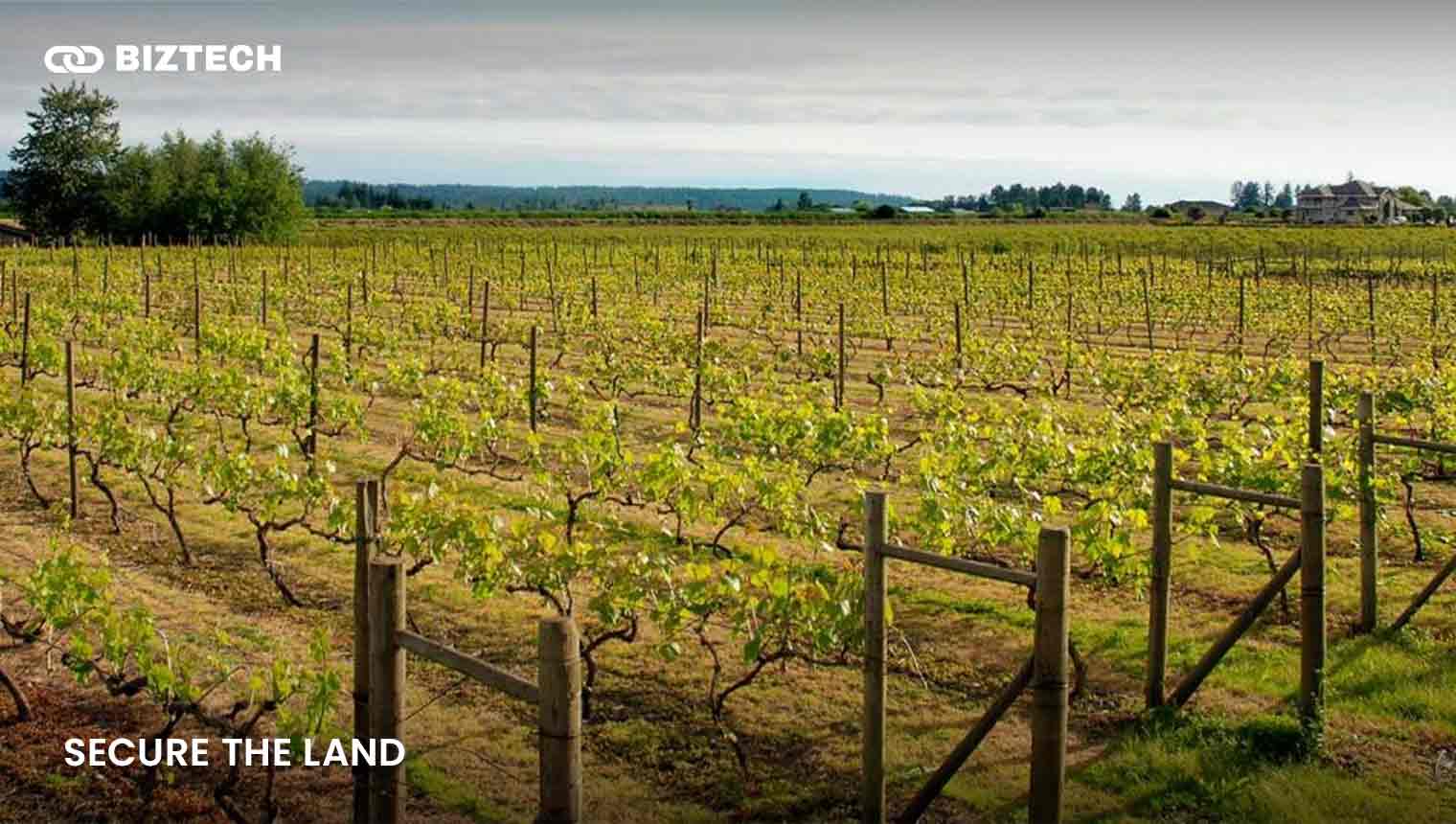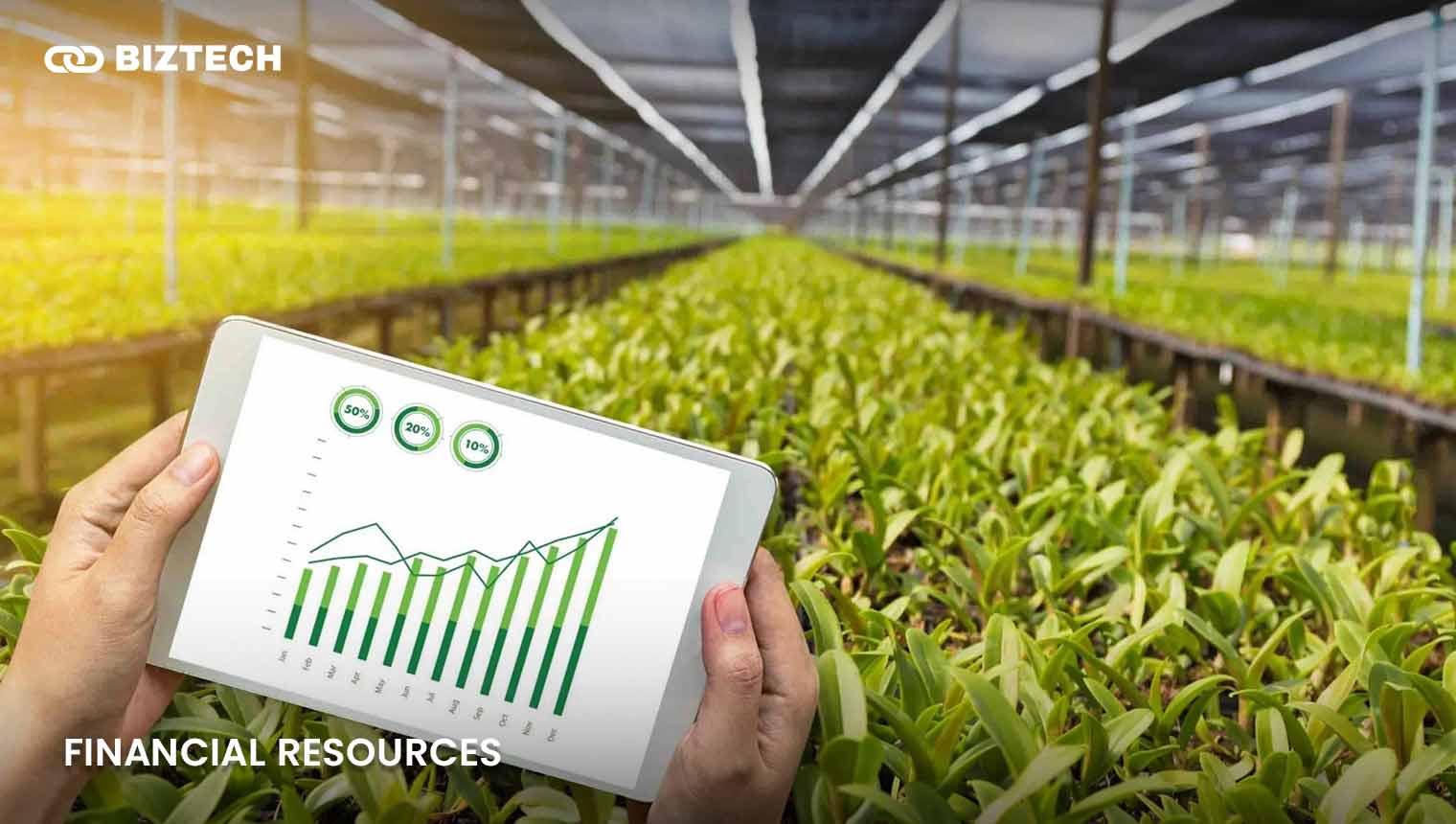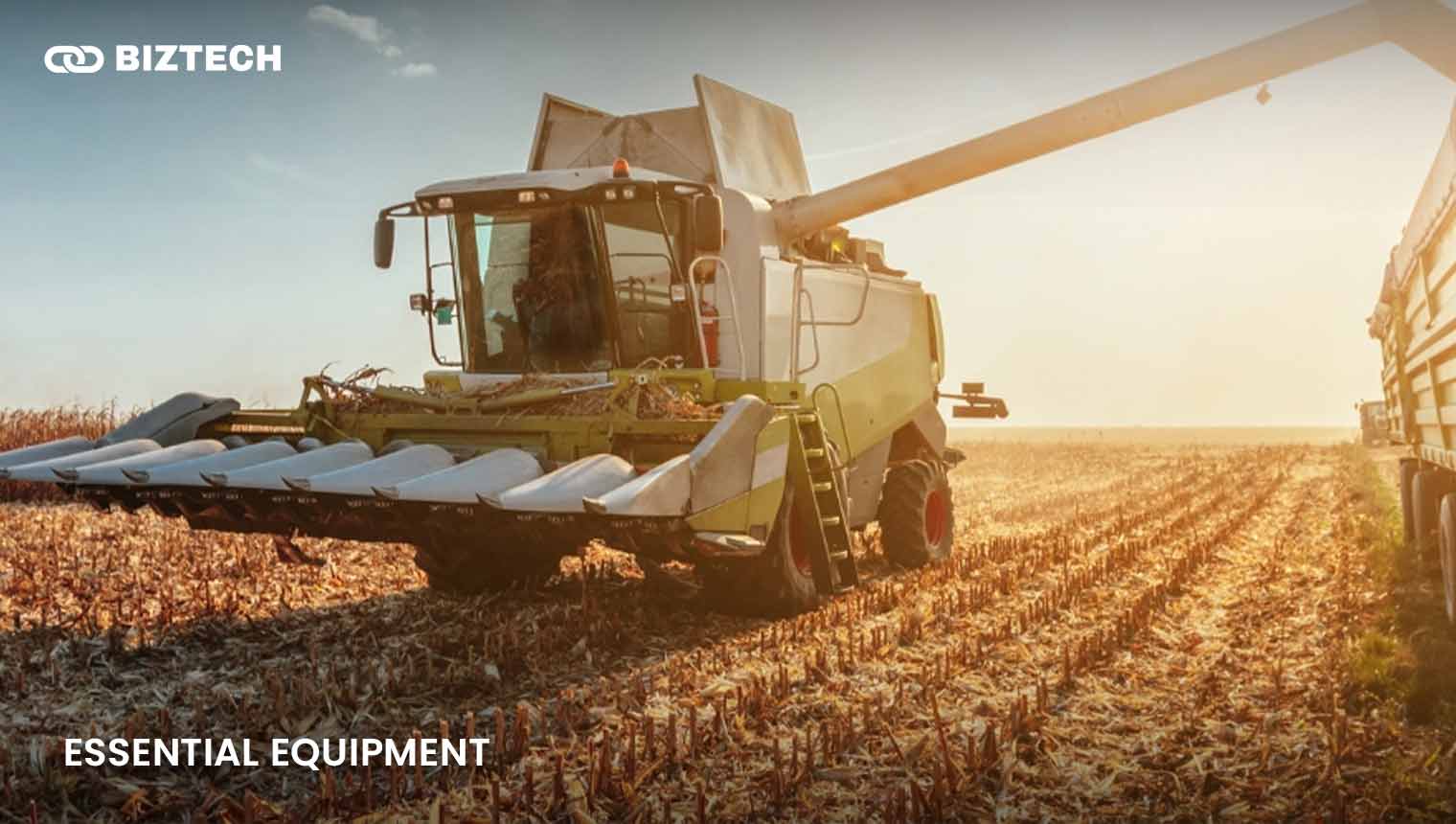
1. A Clear Vision and Plan
Before diving in, clearly define your farming goals. Having a clear vision and well-defined plan is the golden ticket to a thriving farm. What ignites your passion for farming? Is it a desire for fresh, organic produce, the connection to nature, or the entrepreneurial spirit of running your own business? A strong “why” will fuel your motivation during inevitable challenges.
Will you specialize in vegetables, fruits, livestock, or a combination (diversified farm)? Research different types of farming operations (e.g., organic, hydroponic, aquaponics) to find one that aligns with your interests, resources, and local climate. Do market research. Don’t just grow what you love – grow what sells! Research local market demands and identify profitable products. Talk to farmers’ markets, restaurants, and grocery stores to understand consumer preferences and potential sales channels.
Not all crops or livestock are created equal so research the projected income and expenses associated with your chosen products. Consider factors like seed/feed costs, equipment needs, labor requirements, and potential profit margins.
Remember, your vision and plan are living documents. As you gain experience and market conditions evolve, be prepared to adapt and refine your strategy to ensure your farm stays on the path to long-term success.

2. Secure the Land
The land you have serves as the foundation for your agricultural business. It’s where your crops will flourish, your livestock will roam, and your farm dreams will take root. Therefore, having the right property requires careful consideration and a keen eye for detail.
Proximity to your target market plays a significant role in your farm’s success. Consider the distance to farmers’ markets, grocery stores, or distributors you plan to sell to. Minimizing transportation costs will improve your profitability. Healthy soil is the most important so conduct soil tests to assess fertility, drainage, nutrient content, and suitability for your chosen crops. Consider factors like soil type (sandy, loam, clay) and its impact on crop growth. Ensure a reliable and sustainable water source for your crops or livestock. Research options like wells, irrigation systems, or natural water sources (rivers, streams) while considering potential limitations and water rights regulations. You can also choose a crop that uses less water than possible.
Research zoning restrictions and any local regulations governing agricultural activities in your chosen area. This may involve permits for specific types of farming, animal welfare standards, or environmental impact assessments. The ideal land size depends on your farm type and production goals. For beginners, consider starting with a smaller, manageable plot and expanding as your knowledge and resources grow. The decision to lease or purchase land depends on your financial resources and long-term vision. Leasing offers lower upfront costs but may limit your ability to make permanent improvements. Purchasing provides long-term ownership but requires a significant investment.

3. Financial Resources
Farming is a rewarding business, but it also requires financial investment. From acquiring land to purchasing equipment and maintaining day-to-day operations, a well-defined financial plan is important to ensure the long-term viability of your farm.
Know your startup costs. Be realistic about the initial investment required. If you already have land, you still have to spend on equipment like tractors, tillers, and irrigation systems. Of course, you need to buy seeds or livestock. You also need to spend on the building of infrastructure like fences, barns, and storage sheds. And if you are in a strict area, permits and licenses could be another expense.
Aside from the startup costs, there are ongoing operational expenses to consider. For example, fertilizer, feed for livestock, fuel, repairs and maintenance for equipment, utilities, and potential labor costs if you need to hire someone. Therefore, create a comprehensive budget that details your projected income and expenses.
But don’t worry! There are various avenues to explore when financing your farm. For example, agricultural loans. Several banks and government agencies offer loan programs specifically designed for starting or expanding farms. Government grants and programs are also available here in the Philippines to support sustainable farming practices in specific agricultural sectors. Also, consider partnering with another farmer to share resources, equipment, and potentially even land costs. This can be a great way to spread the financial burden and benefit from shared knowledge and experience. You can also try crowdfunding. Online platforms allow you to connect with potential investors who can contribute to your farm’s startup costs in exchange for future rewards or a share of the profits.

4. Essential Equipment
The equipment you use is important for the efficiency and productivity of your farm. The specific equipment needs actually vary depending on your chosen type of farm, but having the right tools at your disposal is important for completing tasks effectively and ensuring the well-being of your crops or livestock.
You need equipment for land preparation and cultivation like tractors, plows, harrows, and tillers to break ground, create planting beds, and manage weeds. As for planting and seeding, depending on the scale and type of your operation, you may need seeders, planters, or transplanters to sow seeds or young plants in your fields efficiently. For smaller farms, hand tools like shovels and trowels may suffice. Aside from this, you need an irrigation system. You may need sprinklers, drip irrigation lines, or canals to deliver water efficiently to your crops.
Tools for harvesting are also needed. For vegetable farms, hand tools like pruners and harvesting knives may be sufficient but larger-scale operations involving grains or fruits may require specialized harvesting machinery like combines or fruit pickers.
As for livestock farms, they have specific equipment needs depending on the type of animals raised. Fencing, watering troughs, feeders, and shelters are essential for all livestock operations. Poultry farms may require nesting boxes and egg collection equipment, while dairy farms may need milking machines and milk storage tanks. Regardless of your farm type, a robust set of hand tools is indispensable. This might include shovels, rakes, hoes, hammers, saws, and pruning shears for various tasks like weeding, planting, maintaining fences, and general repairs.
When acquiring equipment, consider factors like your budget, the size and scale of your farm, and the frequency of use. New equipment can be a significant investment, so research used options or explore equipment leasing programs if cash flow is a concern. Remember, the right equipment can save you time, improve efficiency, and ultimately contribute to the success of your farm.
5. Knowledge and Skills
The path to farm ownership is paved with not just physical tools, but also a good knowledge base and honed agricultural skills. Success in this field depends on your ability to cultivate healthy crops, care for livestock responsibly, and navigate the world of agriculture.
Research best practices for your chosen crops or animals. This includes understanding their specific needs regarding soil conditions, planting techniques, pest and disease management, and harvesting techniques. Consider attending workshops, conferences, or seminars offered by local agricultural extension services, universities, or farmer associations. The internet is a treasure trove of agricultural information. Utilize reputable online resources, university extension websites, and government agriculture departments to access research papers, best practice guides, and troubleshooting tips for various farming challenges. Also, consider enrolling in online courses or certificate programs focused on sustainable agriculture, specific crops or livestock breeds, or farm business management. These programs can provide in-depth knowledge and equip you with the skills necessary to make informed decisions for your farm’s success.
Remember, knowledge is power in the world of agriculture. By actively seeking out learning opportunities, embracing new information, and continuously expanding your skillset, you’ll be well-equipped to tackle challenges, optimize your farm’s production, and become a respected member of the agricultural community.
6. Labor Considerations
Farming is a physically demanding and time-consuming business. The success of your farm depends on the labor you invest, so planning your labor strategy is important for long-term sustainability. Think about whether it’s a solo act or a shared journey. Be honest with yourself and evaluate your physical capabilities, available time, and the scale of your operation. Can you manage the workload alone, or will you need to hire additional help? Consider factors like your age, physical fitness level, and the specific demands of your chosen crops or livestock.
If you have a supportive family willing to contribute, then using their help can be a cost-effective way to manage your farm’s labor needs. But remember to define roles and expectations clearly to avoid burnout and maintain a harmonious family relationship.
But as your farm grows, or maybe, your physical capabilities change due to unforeseen events, hiring additional labor may become necessary so research local wage rates for farmworkers and factor in labor costs when planning your budget. In reality, labor demands change throughout the year. Busy days that need additional workers are planting and harvesting seasons while in other seasons, minimal workers are required. Explore options like hiring seasonal workers, partnering with local agricultural schools for student internships, or utilizing volunteer programs to meet your temporary labor needs.
Remember, your farm’s workforce, whether it’s you alone, your family, or hired employees, is a valuable asset. By carefully considering your labor needs, creating a positive work environment, and offering opportunities for learning and development, you can cultivate a strong and motivated team that contributes significantly to your farm’s success.
7. Understanding Local Regulations
Before planting your first seed or welcoming your first flock of chickens, understand the legalities governing farms in your area first. Processing a complex web of permits, licenses, and regulations can be tiring but with proper research and planning, you can ensure your farm operates within the legal framework and avoids potential roadblocks. Check zoning regulations. Research your property’s zoning designation to confirm if agricultural activities are allowed. Some areas may have limitations on farm size, types of livestock permitted, or noise levels associated with farm operations.
Depending on your farm type and location, you may need to obtain specific permits or licenses to operate legally. These may include business licenses, permits for selling agricultural products, animal welfare certifications (for livestock farms), or permits for using specific types of agricultural chemicals.
Also, check environmental regulations. Farms have a responsibility to operate in an environmentally sustainable manner. Research regulations regarding water usage, manure management, pesticide application, and soil conservation practices. Compliance with these regulations helps protect the environment and ensures the long-term viability of your farm.
If you raise livestock, you must follow animal welfare standards established by local or national government agencies. These standards typically focus on providing animals with adequate housing, food, water, and veterinary care.
8. Building a Marketing Strategy
Growing high-quality produce or raising healthy livestock is just one piece of the puzzle. To turn your farm’s bounty into a thriving business, you need a well-defined marketing strategy that connects you with customers and ensures your products reach their plates.
You can try selling your produce at the farmers’ markets so that you can sell your products directly to consumers. Farmers’ markets provide valuable face-to-face interactions, allowing you to build relationships with customers, showcase the quality of your produce, and educate them about your farming practices.
If you know someone who owns a restaurant, they might often seek fresh, locally sourced ingredients. Reach out to local chefs, restaurants, or culinary institutions to explore opportunities for direct sales. Building relationships with these businesses can provide a stable market for your products and potentially higher profit margins.
You can also partner with wholesale distributors to expand your reach beyond your local area. Distributors can connect you with grocery stores, supermarkets, or food processing companies. However, wholesale prices are often lower than direct sales, so weigh the pros and cons before entering agreements.
Since we are in a world of tech, utilize online tools to connect with customers and promote your farm. Create a user-friendly website showcasing your products, farming practices, and contact information. Explore social media platforms like Facebook and Instagram to share captivating photos of your farm, engage with potential customers, and build brand awareness.
The ideal marketing strategy will depend on your farm type, target audience, and production volume. A small vegetable farm may thrive at a local farmers’ market, while a larger farm raising livestock may benefit from partnering with a distributor. Feel free to experiment with different channels and track your results to see what resonates most with your customer base.




